Learning Assessments: Traditional vs. Non-Traditional Methods
VerifiedAdded on 2022/09/25
|13
|645
|22
Report
AI Summary
This report provides a comprehensive comparison of traditional and non-traditional assessment methods used in learning environments. Traditional assessments, such as multiple-choice tests and short-answer questions, are characterized by their standardized format, ease of scoring, and ability to efficiently assess rote memorization. However, they often lack the ability to evaluate higher-order thinking skills and can be inauthentic. Non-traditional assessments, including observations, essays, performance tasks, and portfolios, offer a more holistic view of student understanding, allowing for the demonstration of complex skills and providing valuable feedback. These methods, however, can be time-consuming and subjective. The report concludes that both types of assessment are crucial for a balanced approach to evaluating student learning, each offering unique insights into student capabilities and progress.
1 out of 13
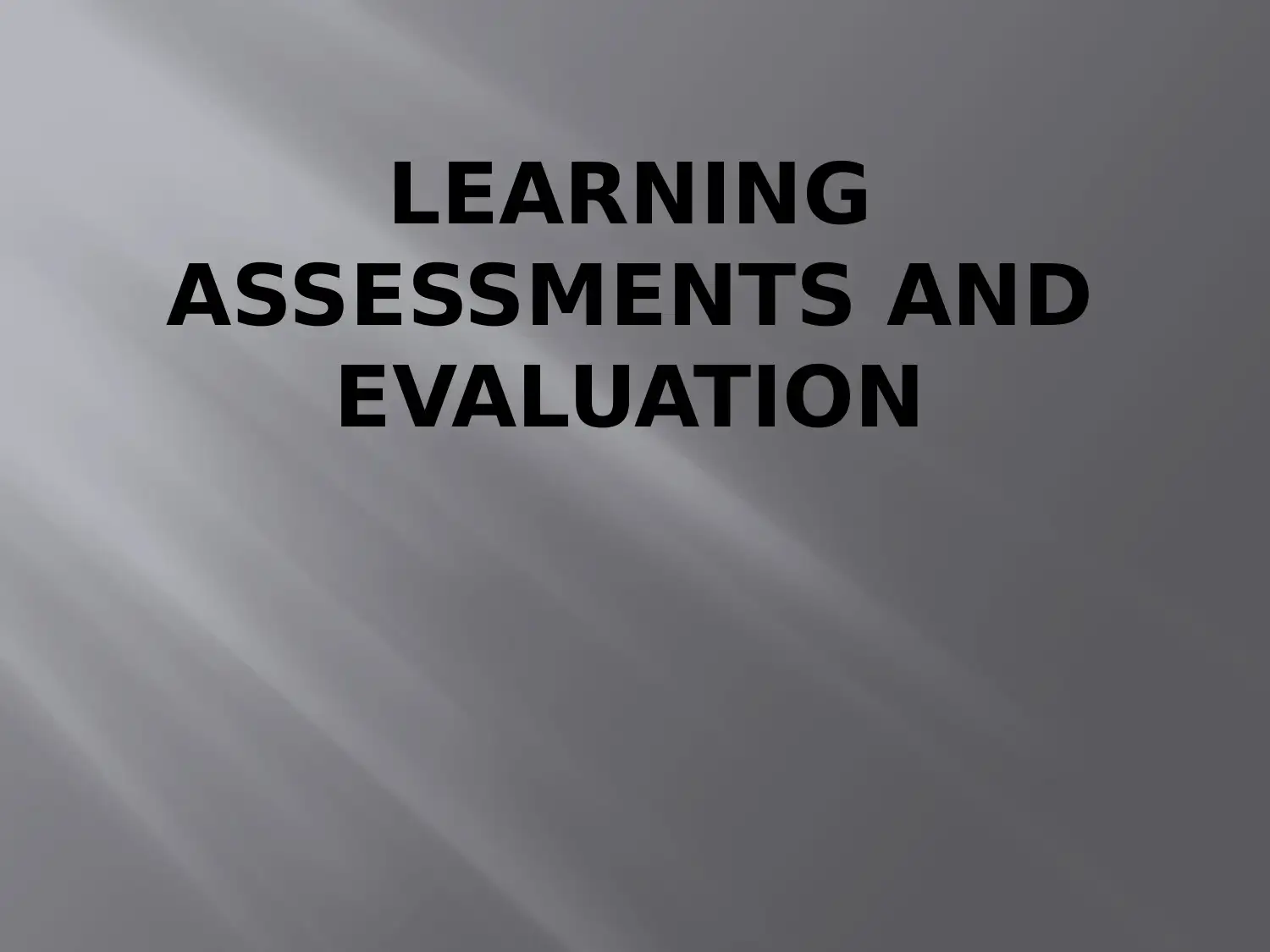
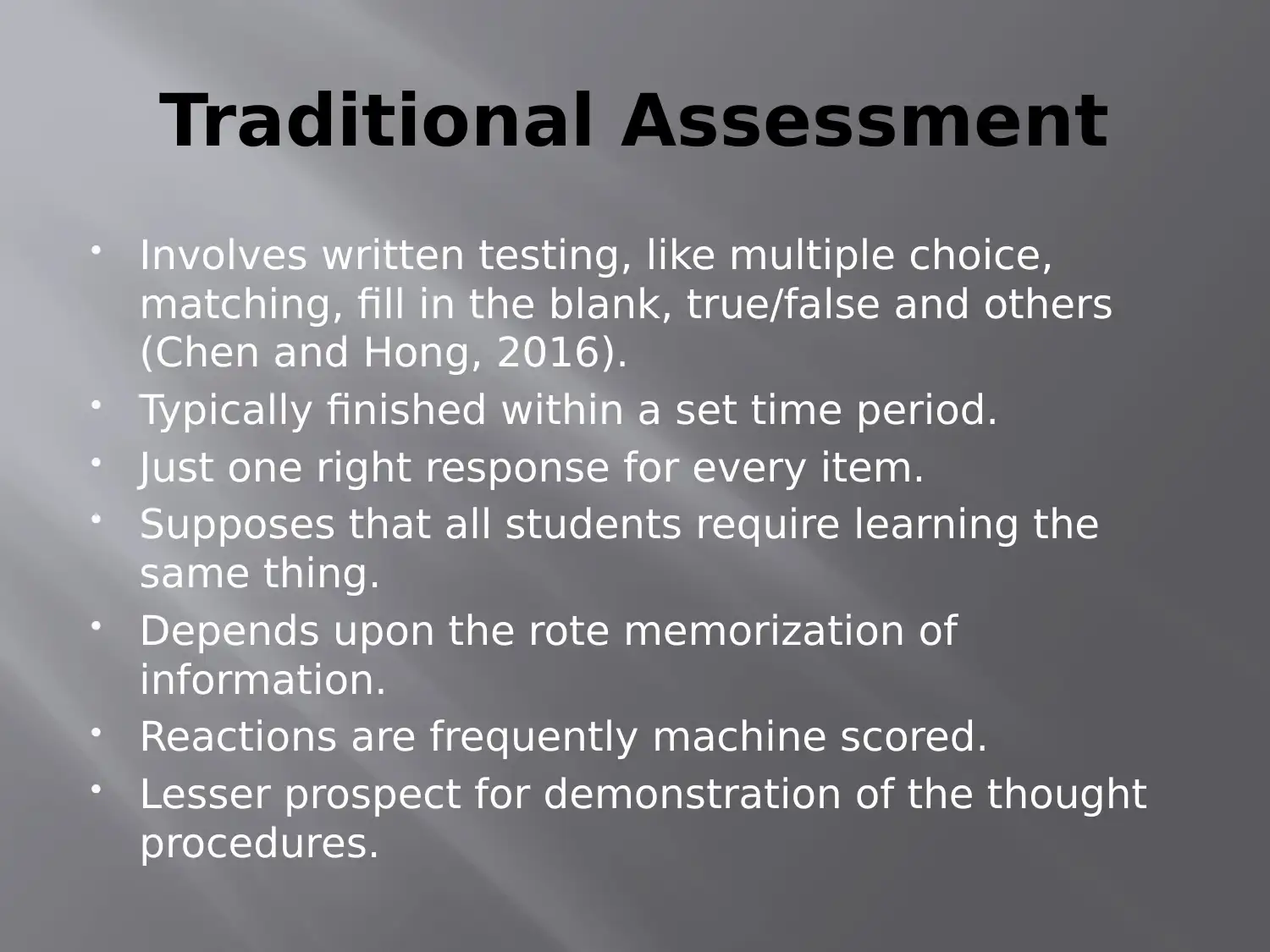
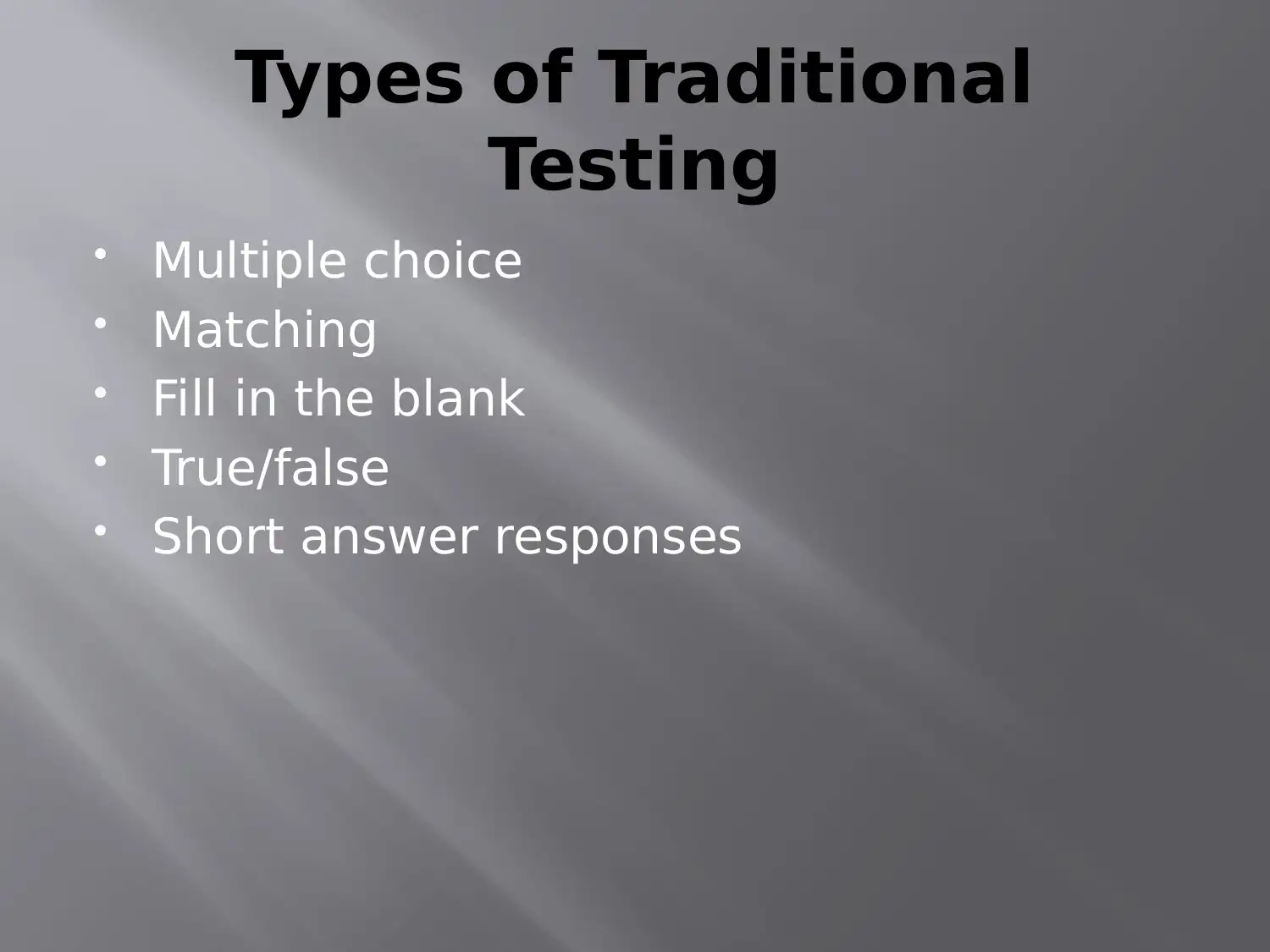

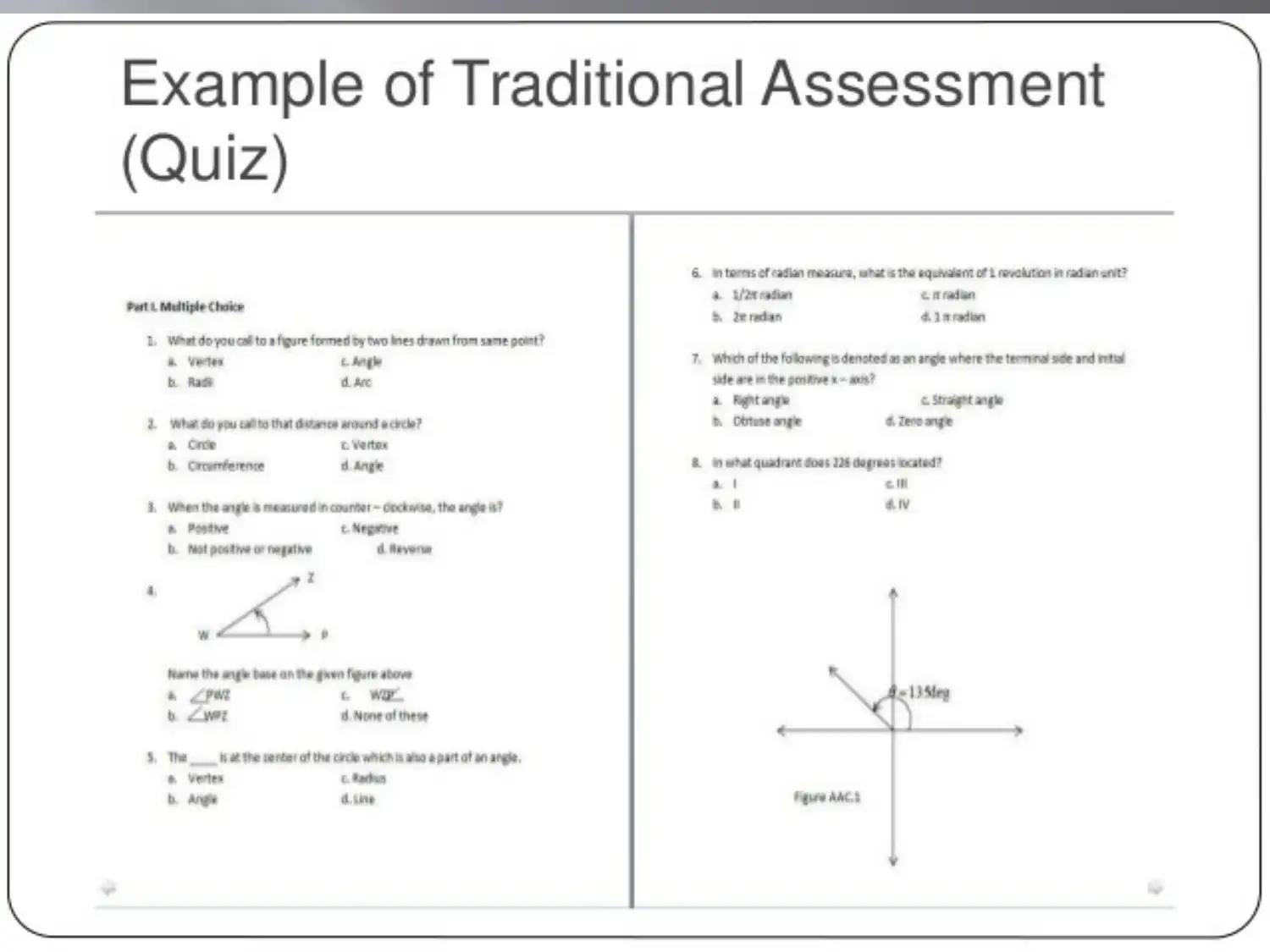
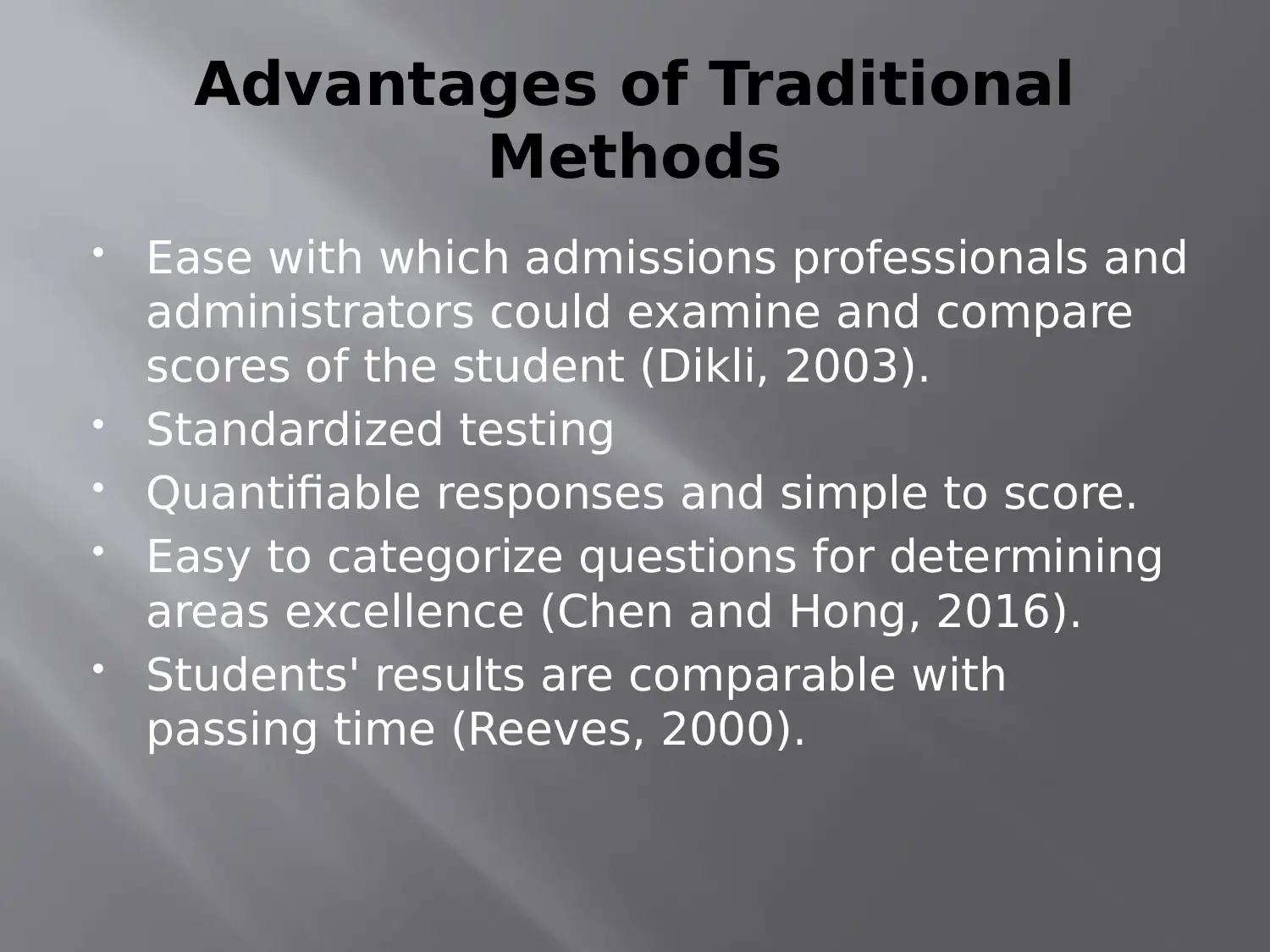
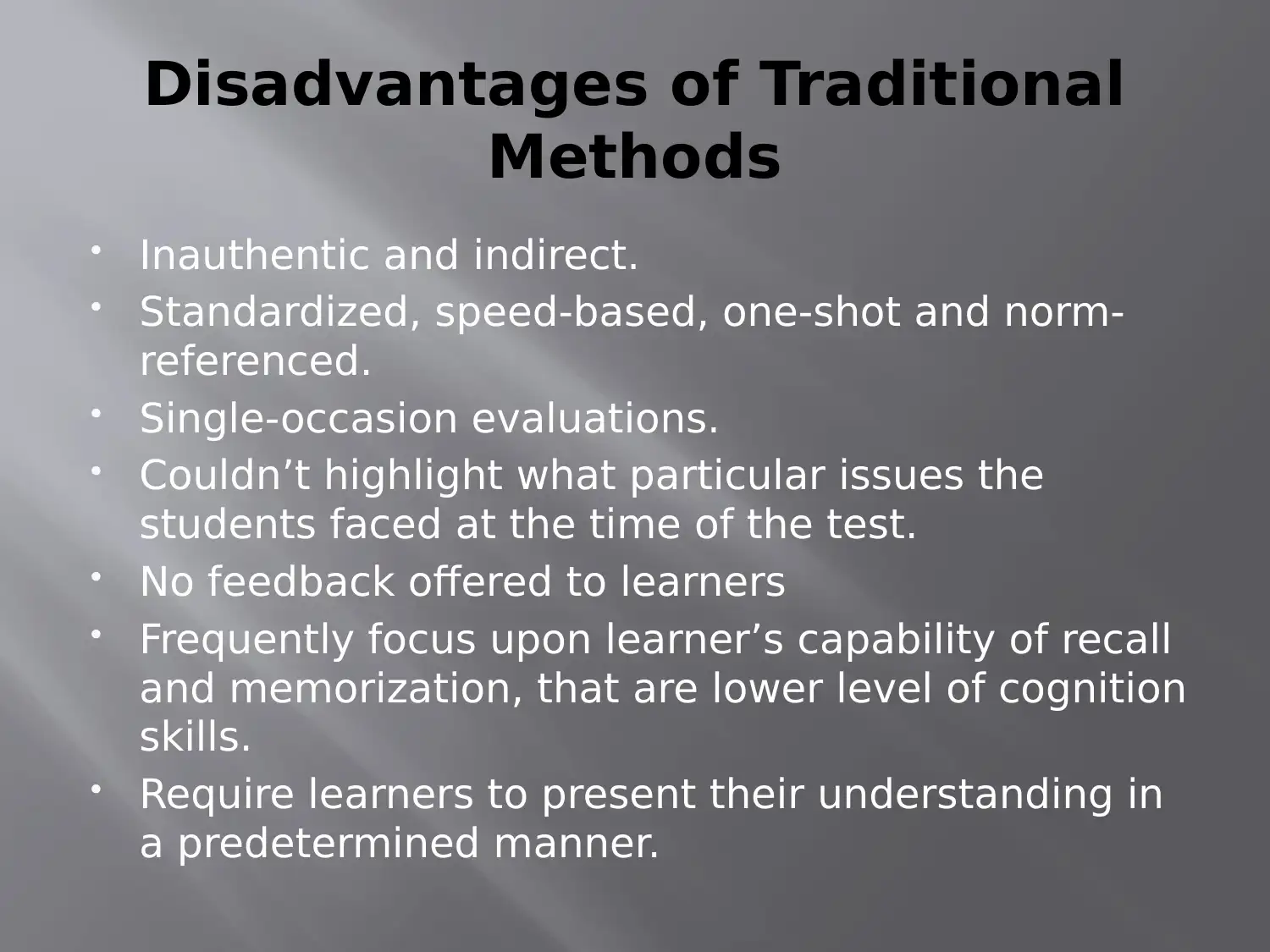
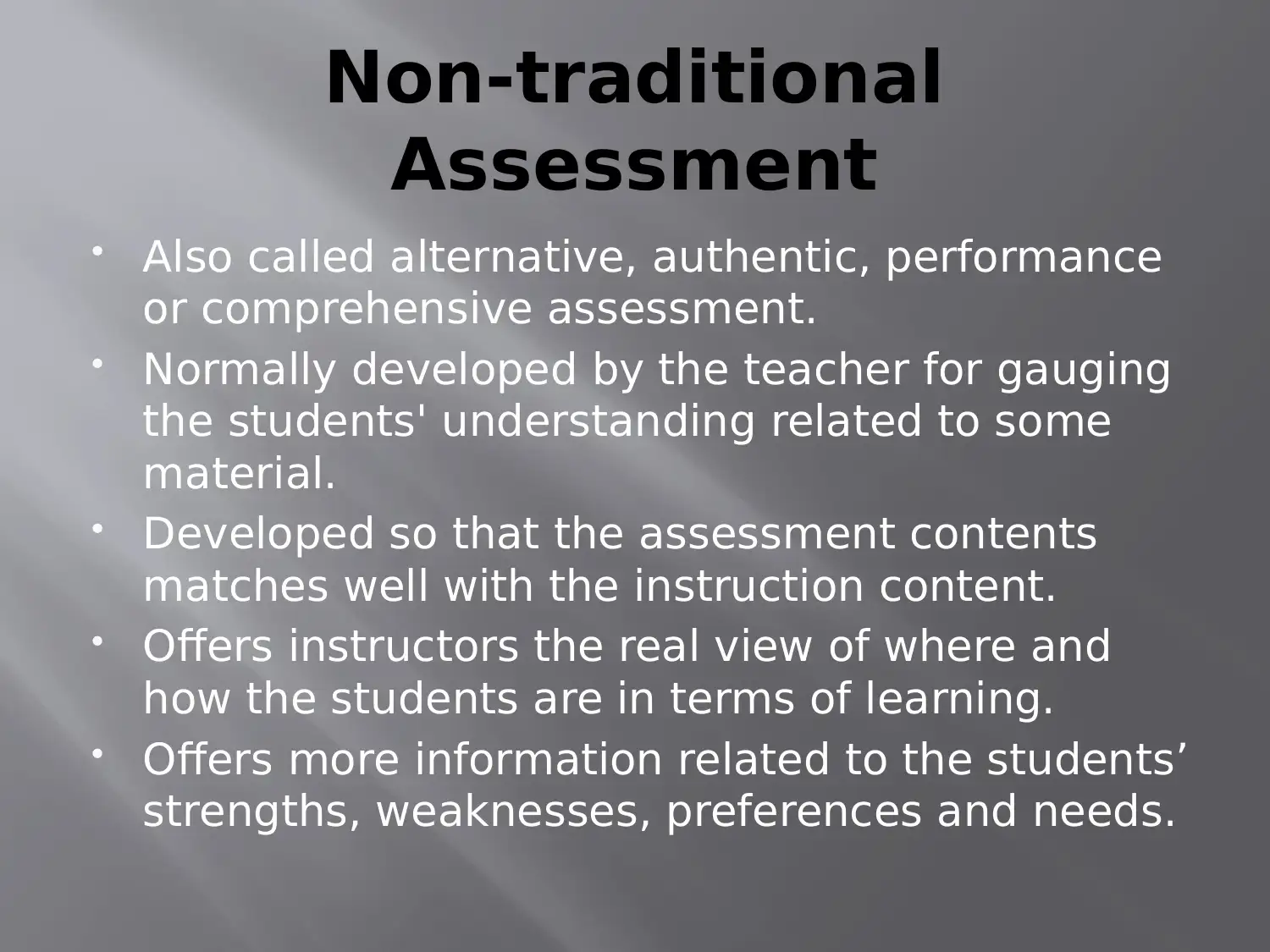
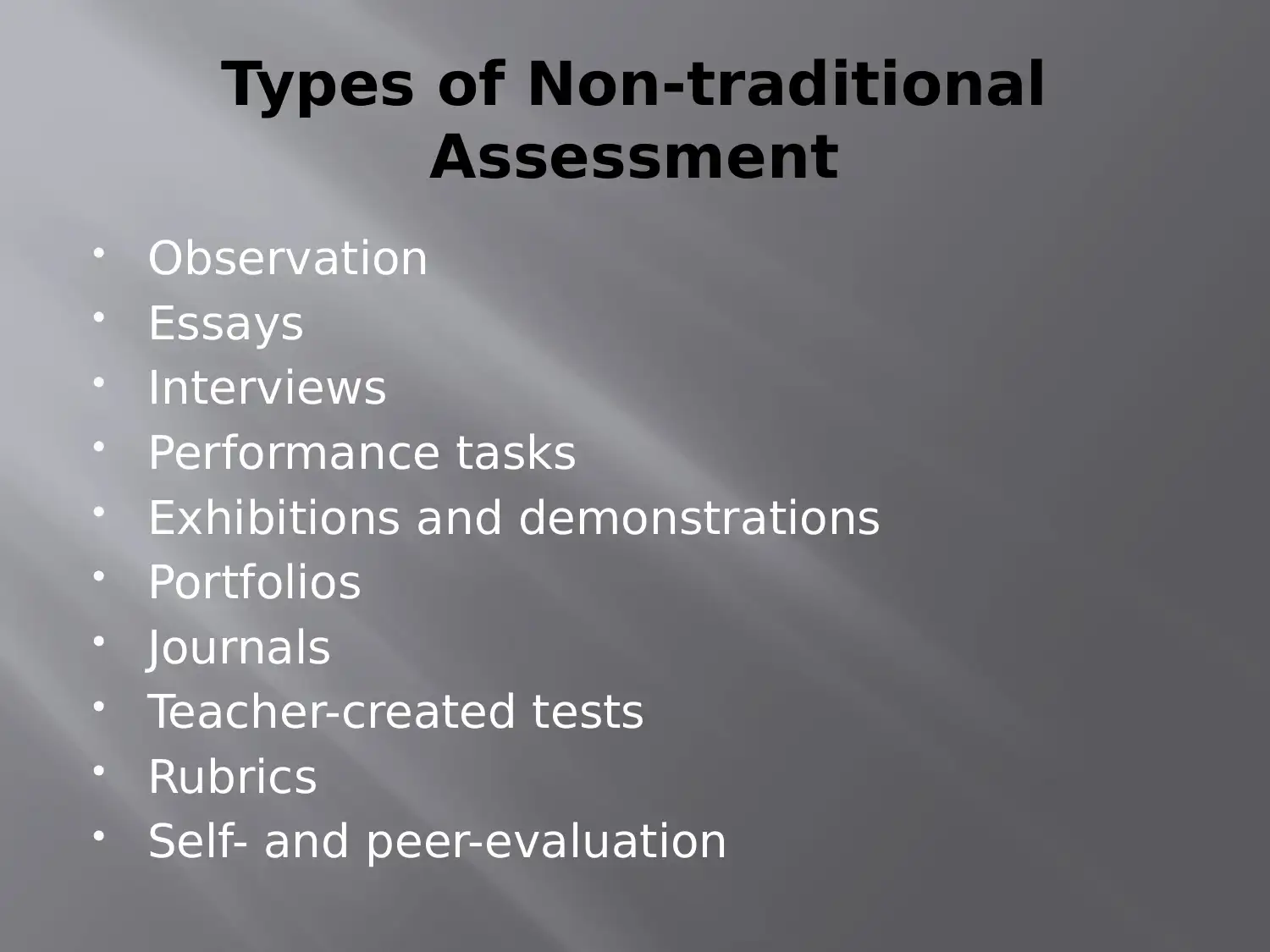
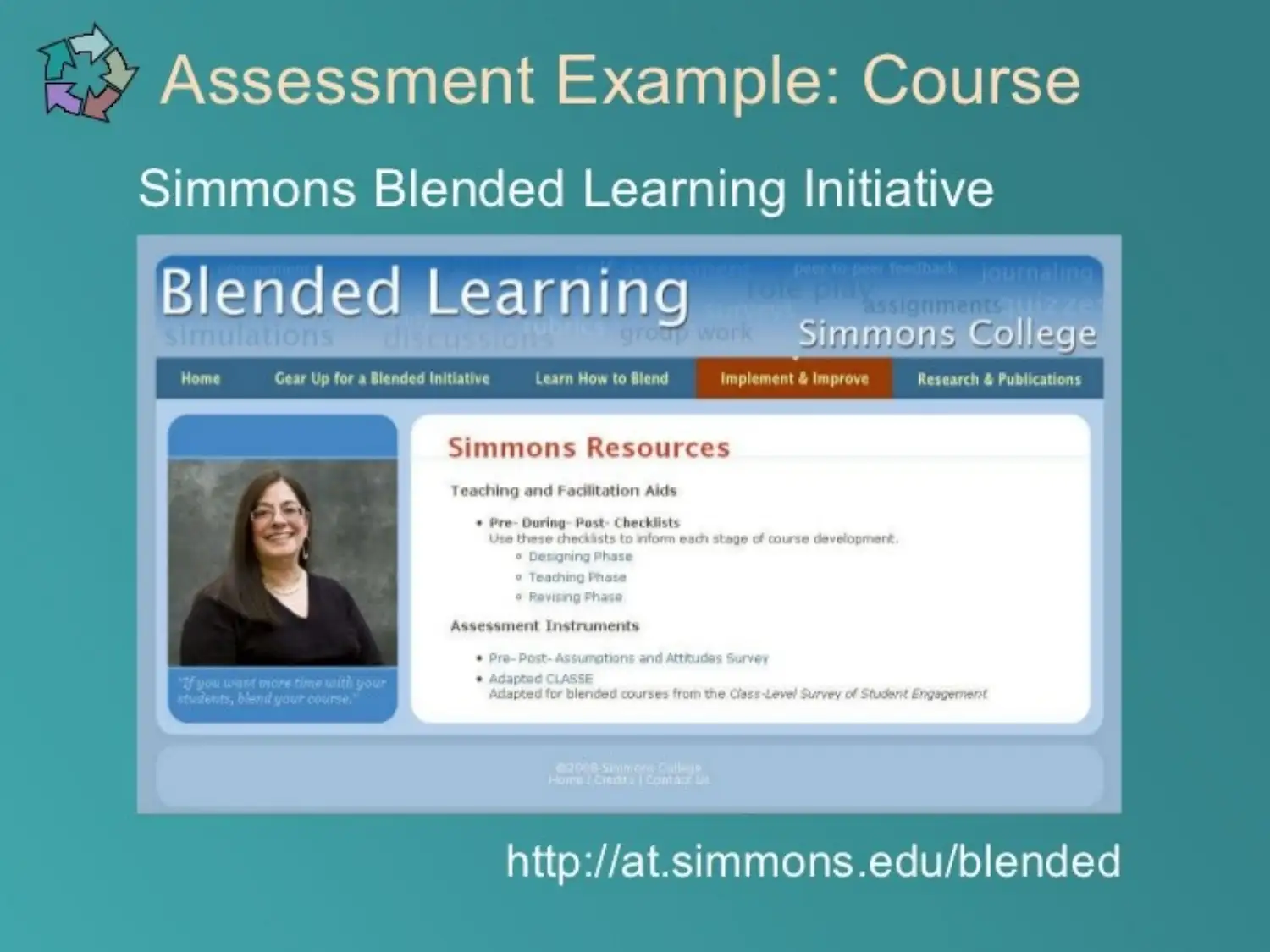
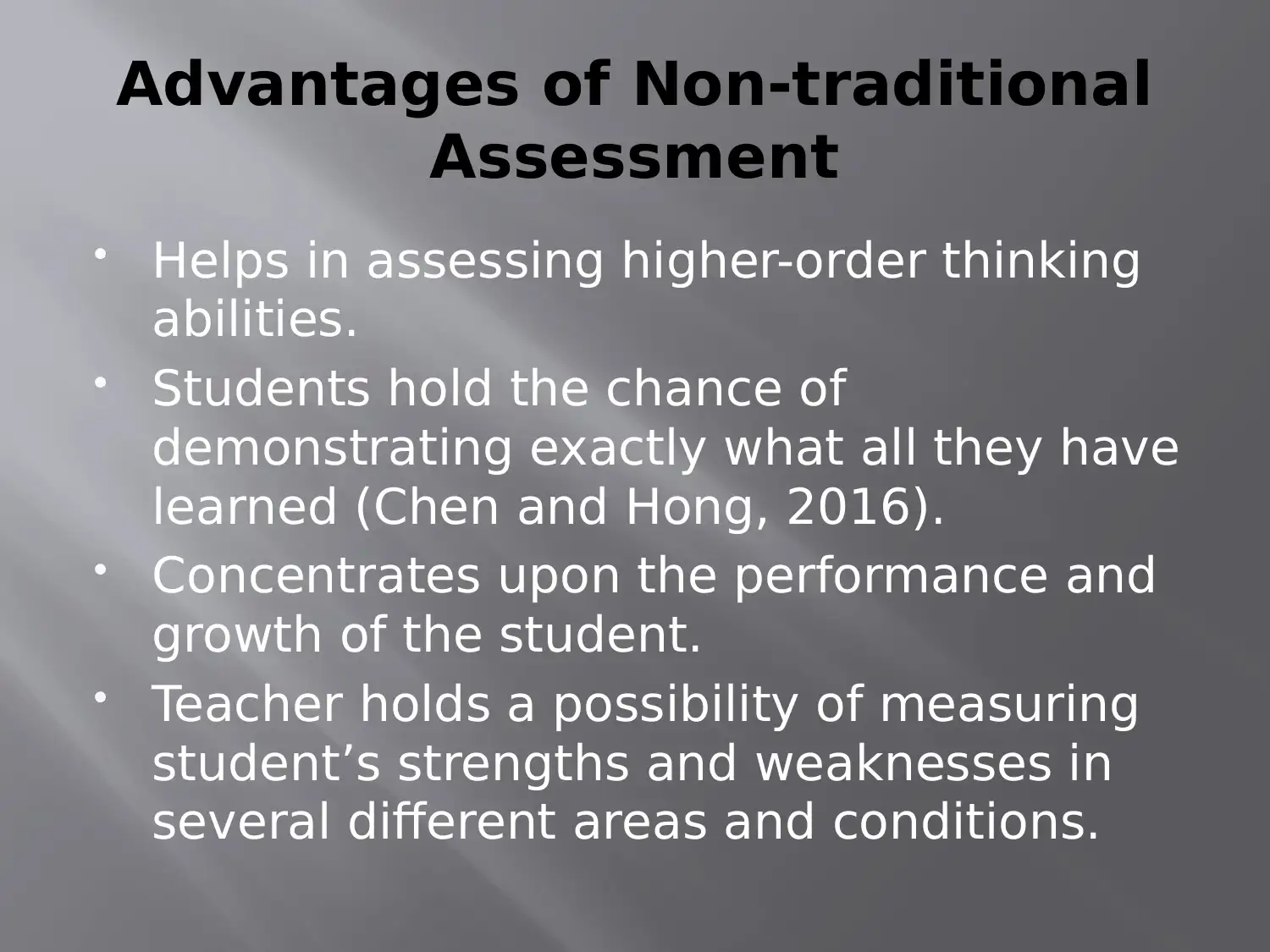
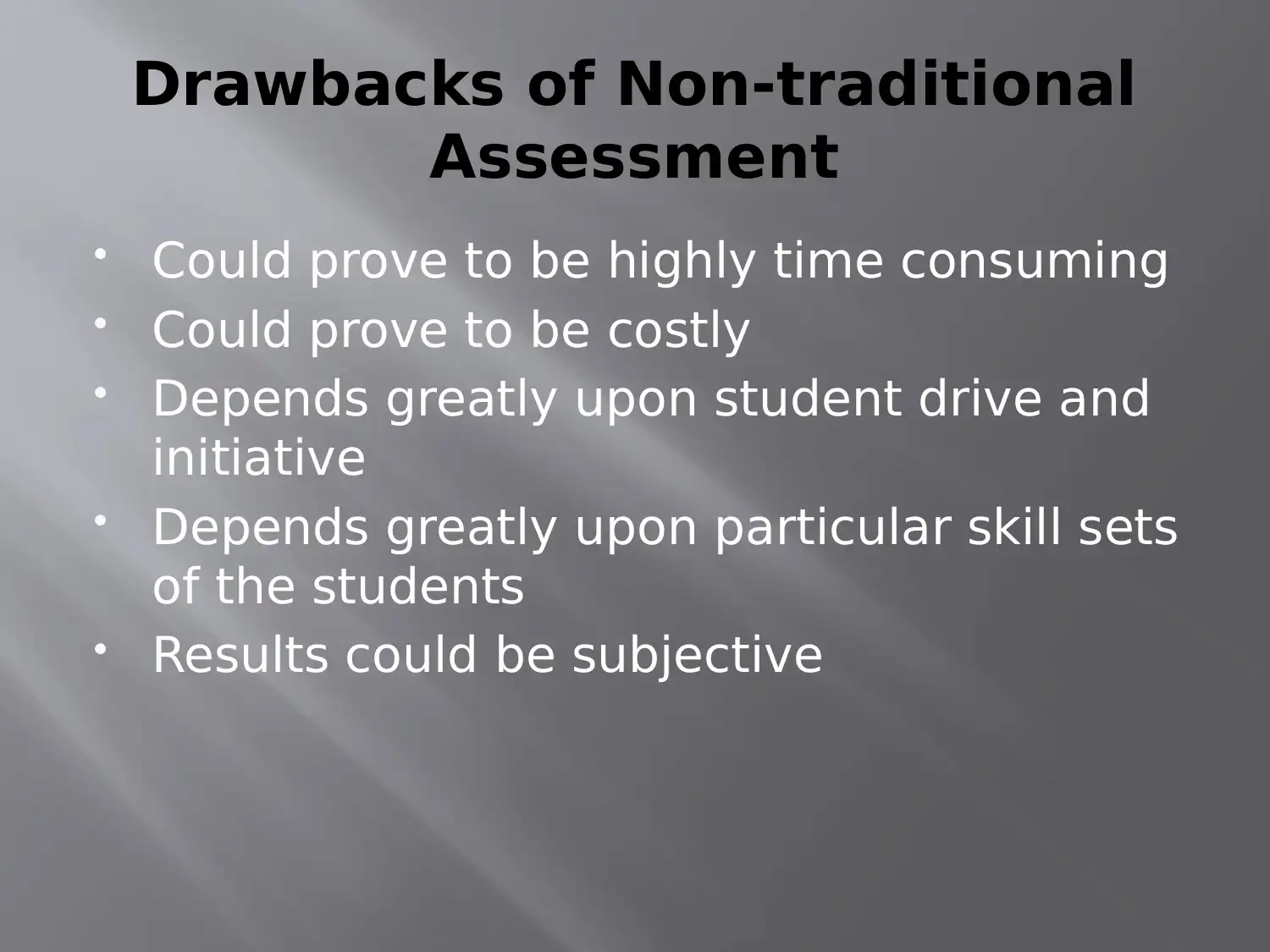
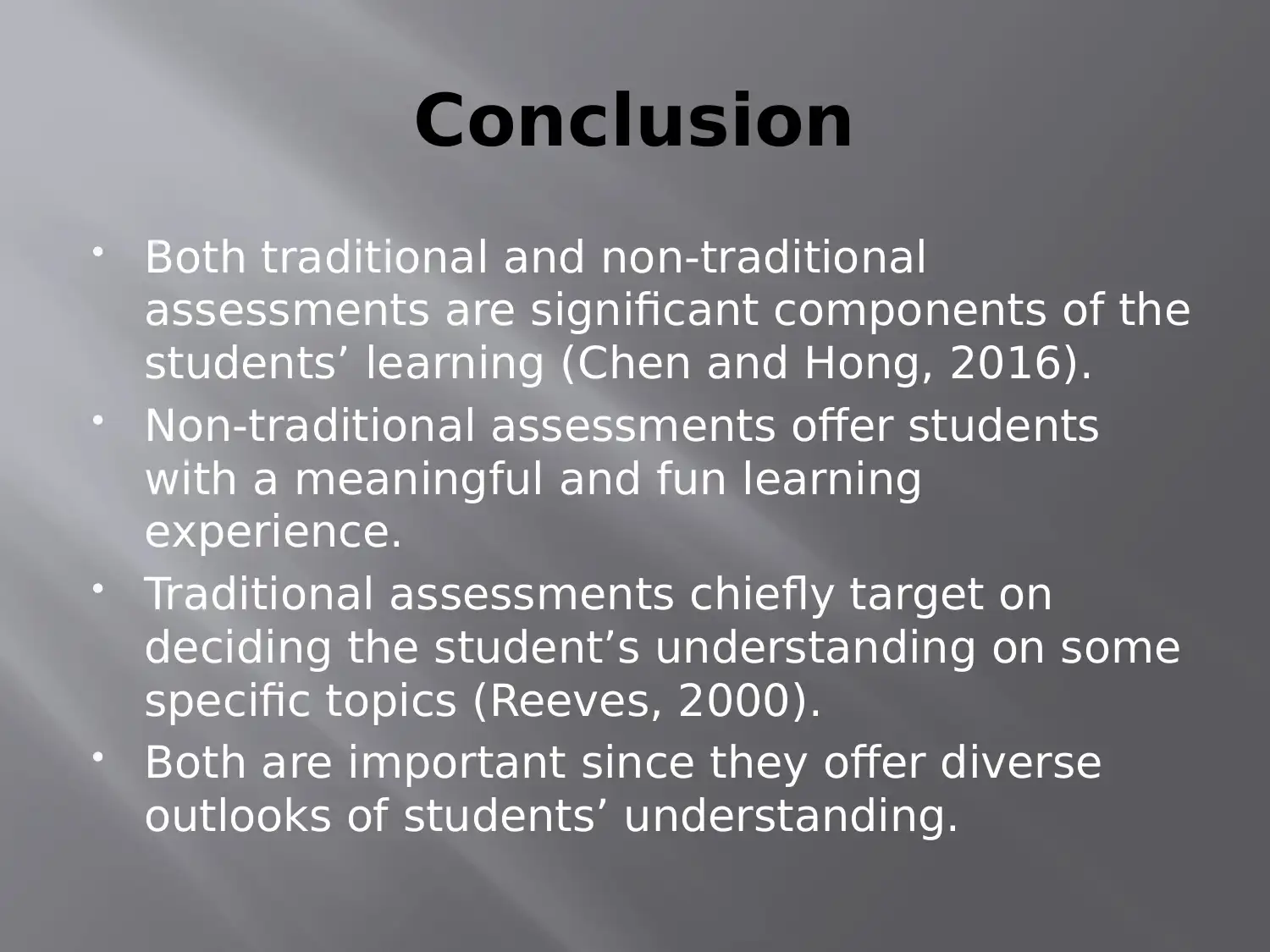
![[object Object]](/_next/static/media/star-bottom.7253800d.svg)